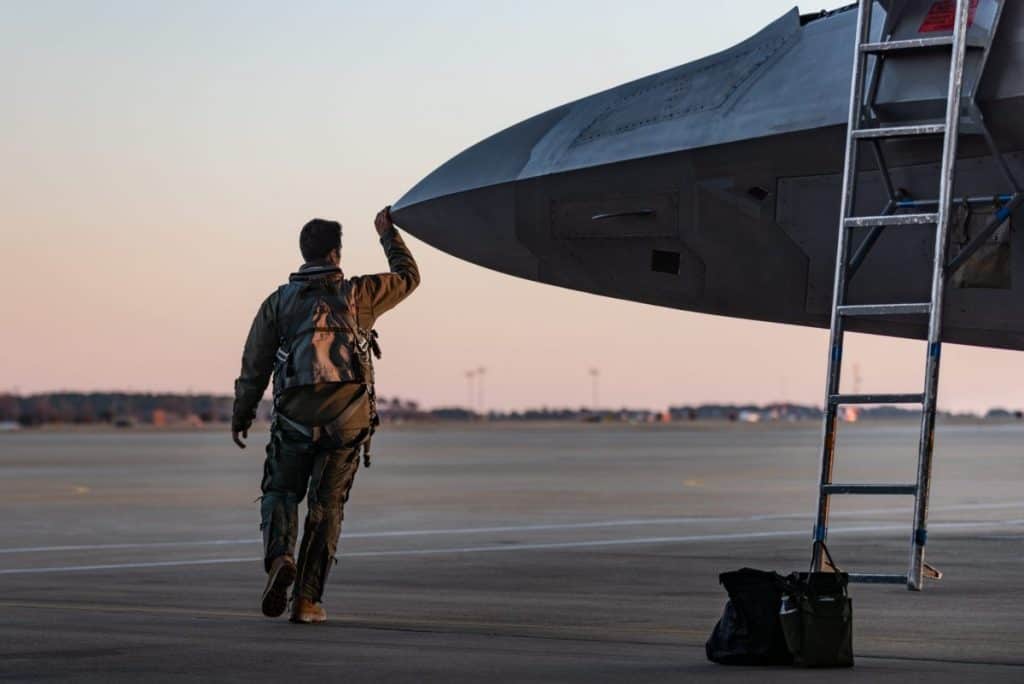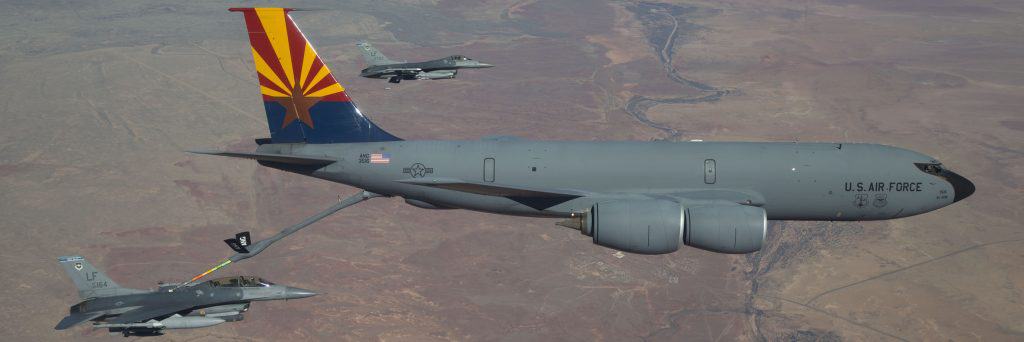Active Duty How-To: U-2 Pilot

Part of the fun of aviation is that there are many different types of aircraft that can be amazing to fly. In the 116 years of powered human flight, a few unique aircraft receive immediate recognition and inspire deep envy. The Concorde, the X-1, the SR-71. Most of these aircraft are retired, and we’ll never get the opportunity to fly them. However, the US Air Force still gives pilots the chance to fly an amazing aircraft: The Lockheed U-2S Dragon Lady.
In case you’re not familiar, the U-2 is an ultra-high altitude reconnaissance aircraft flown by the US Air Force. It’s crewed by a single pilot, riding on an ejection seat, flying long-duration missions at altitudes above 70,000 feet. The cockpit is pressurized, but the pilot still has to wear a full pressure suit (space suit). At those altitudes, if the cockpit pressurization were to suddenly fail, a pilot without a P-suit would pass out almost instantly. The U-2 carries a very wide array of equipment that can be swapped out in a matter of days. From color and IR cameras, to radar, to atmospheric sensing equipment, and many other things we can’t even discuss here, the U-2 is useful for all kinds of purposes. It’s an amazing aircraft that few humans will ever get to fly.
This post is based on interviews with several different U-2 pilots (who will all remain anonymous). My aim is to give you unique insight into the life of a U-2 pilot. For those lucky pilots who are or will be in a position to apply to fly this jet, I believe I’ve uncovered some of the most important things you can do to make yourself competitive.
This is the first article in a series where I aim to explain the special flying opportunities available in military aviation. I want to show what life is like in these jobs, and, equally as important, help you learn how to get there. If you’ve enjoyed a special flying opportunity in your career and would like others to hear about it, please let me know!
Table of Contents
- Flying the U-2
- Wearing a Spacesuit
- Flying the T-38
- The Mission
- Deployments and Professional Development
- Training
- How to be Competitive
Flying the U-2
Lest there be any doubt: Yes! Flying the U-2 is every bit as awesome as you imagine.
The U-2 is an amazing aircraft. It has the same engine as an F-16 (minus the afterburner), but a whole lot more wing. One former F-16 pilot noted that the U-2 can sustain a climb rate almost as rapid as his former fighter’s.
The Air Force admits that the U-2 flies “above 70,000 feet.” At that altitude, you’re in a tight “coffin corner”--just a few knots above stall and a few knots below Vne. There is very little room for error.
At altitude, the view really is as amazing as you think. Most of us pilots like taking pictures while we fly because it’s difficult for us to describe why we love our jobs so much with words alone. U-2 pilots love taking pictures, and it’s encouraged as long as you aren’t in a critical phase of flight, and you make sure that there isn’t anything classified in the frame.
The featured image for this post was graciously provided by Extreme Ross, a former U-2 pilot and very talented photographer. If you like this image, be sure to visit his website and check out his work! You can order many of his amazing shots at sizes large enough to do justice to any hangar, meeting room, or man/woman cave. For regular updates, be sure to like his Facebook page as well!
The Air Force even likes his work enough that they made sure he was in the air during the Total Solar Eclipse a couple of years ago. You should see his famous picture here. Although the AF encourages photography, you’re not allowed to make it into a business while you’re on Active Duty. (This delayed the launch of Extreme’s website.)
As challenging as it can be to fly the U-2 at altitude, the real test of a pilot’s mettle is landing. The jet’s 105 feet of wing are so efficient that you must stall it to land. However, if you stall too high, you’ll damage a critical national asset for which spare parts can be difficult to find. You don’t want the attention that comes with breaking the jet on landing.
Unfortunately, the aircraft’s unique landing gear and seating configuration, coupled with its Pinocchio-length nose, prevent you from seeing the runway in front of you. Instead, another pilot follows you down the runway in a high-performance chase car, using a radio to tell you how many feet you are above the runway. (And if you think this sounds tough under normal circumstances, wait until you have to practice a no-flap landing on a day with calm winds!)

One of the reasons that the U-2 community can be so picky in its selection process is that it can’t afford to waste resources on someone who isn’t an amazing pilot. We’ll see later that they also want people with good references, but no amount of being a “good dude/dudette” can make up for being bad in the jet. You may think that since it’s a single-seat aircraft you can get by if you’re weak in a couple of areas, but that’s not the case. If you’re not cutting it, people will know.
Wearing a Spacesuit
In the words of one pilot, the U-2 is a human factors nightmare. Imagine trying to fly an airplane and flip switches wearing a set of oven mitts. Imagine trying to use a touchscreen iPad with those mitts on. (The answer is a stylus. Some people bring 2 of them so they can pinch-zoom.) Imagine trying to hunt down a circuit breaker behind your hips when you’re strapped into an ejection seat and your helmet won’t turn past the 10 & 2 o’clock positions.
If you drop something, it’s a significant emotional event. You carry a snake-in-a-can device with a spring-loaded claw on the end to retrieve dropped items, but the only way to fit this device in your pocket is to curl it up. Yes, it tries to vacate your pocket, forcefully, while you’re flying well above FL700, the moment you open that pocket.
No matter what, you will feel “like a bag of ass” after flying a real-world mission.
The Aircrew Flight Equipment specialists who fit you for and maintain your suit are great at their job. If something doesn’t fit, don’t play “I have a secret” and try to tough things out. They take intense professional pride in doing whatever it takes to make sure you can accomplish the mission without the distractions of poorly-adjusted equipment. Some people don’t love wearing the suit, but as long as it’s adjusted properly it can be comfortable for a full 10+ hour mission.
Any time a group of U-2 pilots is hanging out, it is 100% guaranteed that their conversation will include a discussion of how not to take a duce while flying the Duce. (Flying this jet is a no-failure mission in more than one way.) You can, at least, get rid of excess water while flying. You wear what amounts to a condom with a tube on the end. That tubing runs down along your leg to a hole near the bottom of your suit and from there to a bag for storage. The system usually works correctly, but it’s always a terrifying moment the first time you have to use it early in a long mission. The existential question for all U-2 pilots at that point is: “Did I fall out?” There is no greater relief for a U-2 pilot than noting the flow of liquid into the reservoir after risking it all that first time each flight.
If all of this sounds like a nightmare to you, then you should definitely not apply to fly this aircraft. You can’t be part of this fascinating mission without the human factors considerations. Personally, I think this all sounds like a unique aviation challenge, and I’d choose to tackle it in a heartbeat.
Flying the T-38
Since the U-2 is such a rare and precious asset, there just aren’t enough of them to give all the pilots as much flying as they need to stay current. The Air Force makes up the difference by giving U-2 pilots a great deal--it maintains a small fleet of T-38s for them to fly.

The T-38 is a fantastic aircraft. It’s straightforward, fast, maneuverable, and fun. The goal is for a pilot to fly the T-38 between two and six times a month, and the U-2 one to two times. For military aviation, I’d say this is a pretty great balance.
In addition to flying the T-38 at work during the week, U-2 pilots are welcome to take jets out on cross-country trips over the weekend. This is a dream come true for young/single pilots, but even the married ones are known to take an epic trip or two every year.
The Mission
A few years ago, some genius bean-counters decided to get rid of the U-2 and replace it with the RQ-4 Global Hawk. After everyone with some modicum of perspective chimed in, Congress and the Air Force realized how stupid that idea had been and decided to keep the U-2 around after all. Thankfully, the Air Force’s most recent position is that both the U-2 and the RQ-4 are important. We need both to accomplish our mission.
The U-2 requires competent pilots who are great at flying because it is a single-seat aircraft that flies highly visible missions. Mission control has the capability to communicate with you through HF radio and “other means,” but for the most part, they do you the courtesy of leaving you alone and letting you do your job. Essentially your sensors and other equipment are controlled from the ground, and all you have to do is fly your assigned course. However, one of the U-2’s unique and critical capabilities is the fact that you are flexible.
If mission control notices something on one of your sensors and wants another pass, they call you and ask for it. As the pilot, you maintain constant situational awareness on your fuel state. If you can spare the gas, you can immediately adjust course and give the people what they want. It seems crazy, but this kind of flexibility is simply beyond the capabilities of the RQ-4 that is controlled more by typing commands into a computer than driving with a joystick. Also, the Global Hawk can’t fly through weather.








